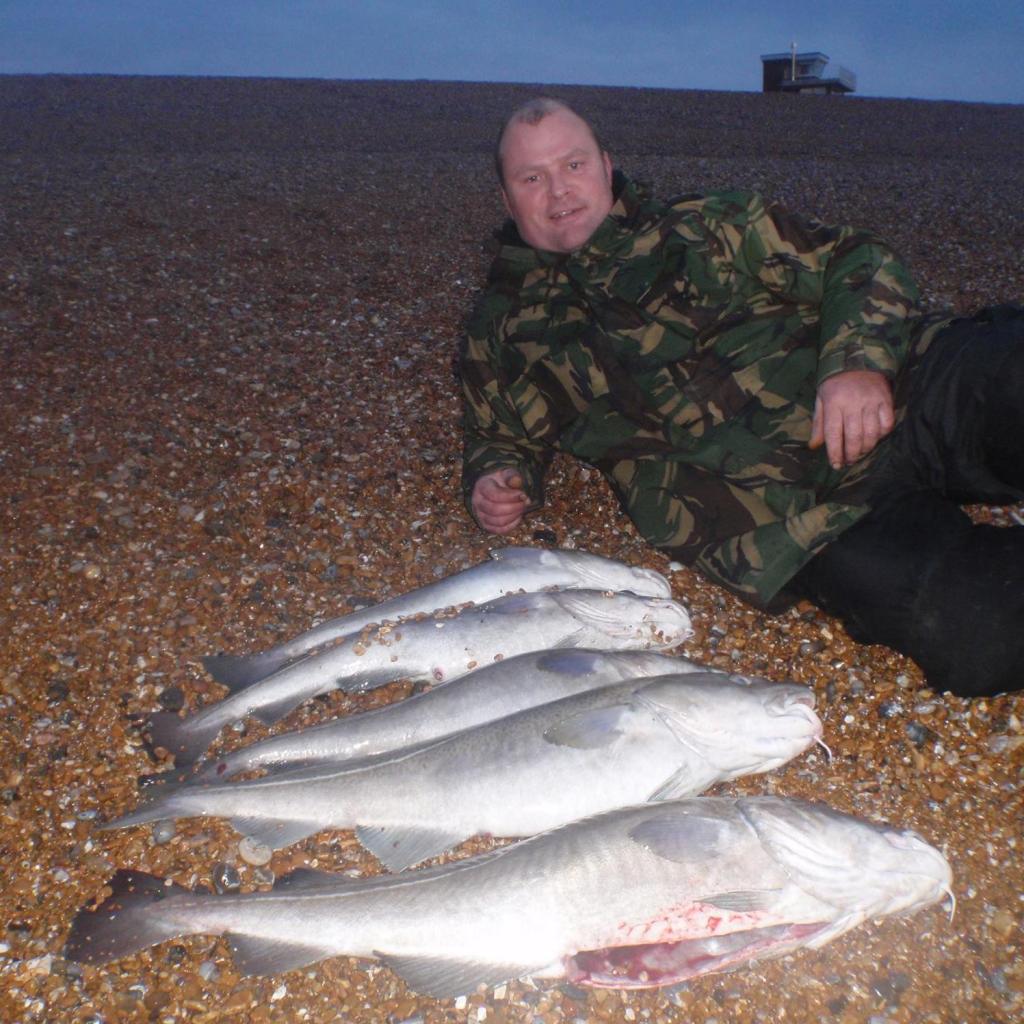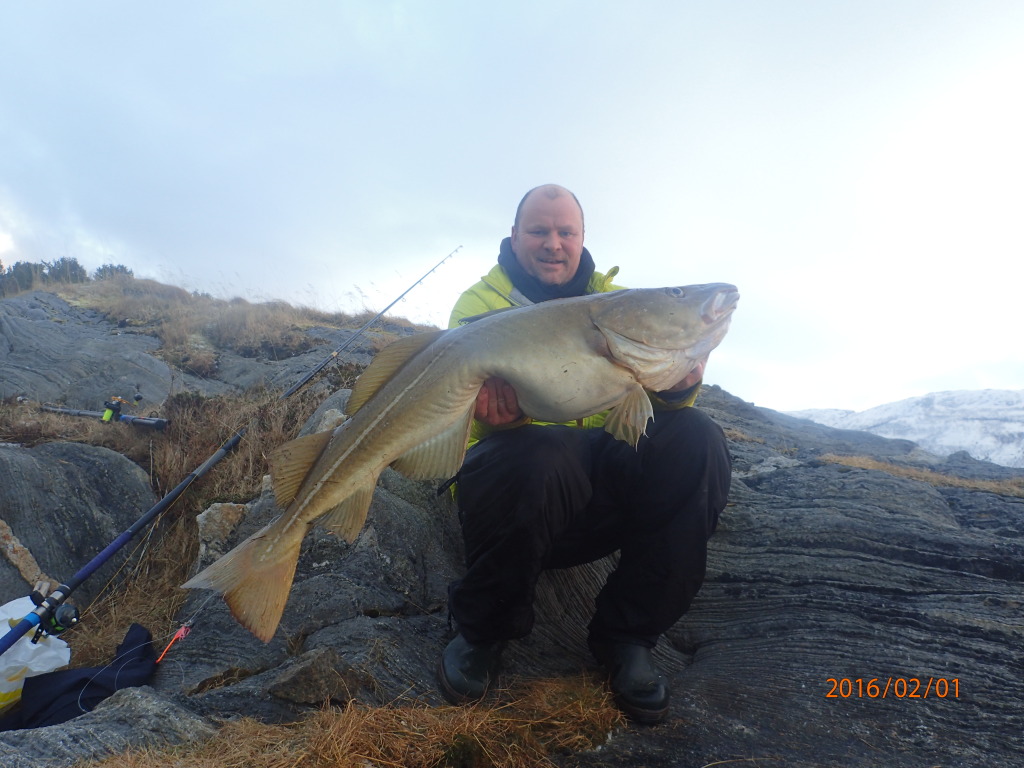How often have you fished right next to someone and all they seem to do is pull in cod after cod, yet you cannot get a bite. You might even walk over to have a “nosey chat” with them, and enquire as to what bait, rig & method they are using. And quite often you here that they’re using similar bait, the same rig and even the same rod as you are!! How frustrating is that!!??
But delve a little deeper and you’ll often find that there are in fact subtle differences in the way they rig their baits, the way they set their lead into the tide, the way they notice the bites amongst the windy rod rattles and so in. in fact it’s the subtle differences that often set the better anglers apart from the average anglers. And when you make lots of subtle differences it can amount to a big difference, and the difference between success and failure.
Lets presume you are in the right place to catch cod. You’re also there at the right time of year and the tides are also conducive to there being a cod or 2 there. Congratulations you’re almost there!! So why can’t I get a fish but that chap keeps pulling them in??
Lets start with bait.
Cod can be very greedy feeders. Sometimes you can catch them on almost anything. But most of the time this isn’t the case. They can become preoccupied with certain food sources. They also change their feeding habits as they grow, switching from worms and small crustaceans when young, to a mainly fish diet as they become adults. But if the cod in your area are there for a certain reason, i.e. to spawn, then chances are there’s also a natural reason they spawn in that area. And that natural reason is always going to be a reliable food source.
Take the Bristol Channel as an example. Each year the cod migrate into the channel to spawn, and at the same time the sprat shoals turn up en-mass. The very same sprats that the anglers moan about are the very reason the cod are there in the first place! The cod become hard to catch as they feed midwater on the sprats, so is it any surprise that the shore angler who fishes worm baits on the seabed doesn’t seem to catch anything but tiny codling? Then when the sprat shoals disappear the cod are forced to look for alternative food sources, and they then come inshore looking for crab, worm and smaller fish (even smaller cod). The famous spring run is underway, yet most of these cod were there all along, they just weren’t in the feeding zone that you were fishing. So therefore if you know what the cod are there to eat at that specific time then you are always going to out fish the chap that doesn’t.
Always try to keep your bait in the condition it came out the sea, or if frozen try to keep it frozen until you are putting it onto the hooks. Too often I see anglers using thawed out mushy fish baits. by the time they’ve filleted it, wrapped it onto their hooks, then lashed it tightly with elastic they end up with a ball of mush, and most of the important blood and oil is all over their hands and the floor. Not much of a scant trail left in that bait, and by the time it hits the water and then sinks to the bottom it’s practically washed out. If you can rig the bait when it’s just starting to thaw you can send it into the water to thaw out on the sea bed. Then the elastic can squeeze the blood and oil from the bait and create a perfect scent trail straight to your hook. One subtle difference, 2 completely different results.
Now lets look at rigs.
Many years ago I invented a rig that I used to great effect at Dungeness. It was a twist on the “standard livebait rig” which literally hundreds of anglers had been trying with limited success for an age. The first time I tried it I had a cod bonanza, fishing alongside dozens of good winter cod anglers, and proved that if you’re willing to do a little research and think about your approach you can enjoy some fantastic results. Again a subtle difference made all the difference.
We’ve taken this same mentality to Norway. We’ve tweaked and changed our rigs so as to increase catches, decrease tackle losses, prevent lost fish and to also make the rigs fish well throughout a long session and not end up a tangled ball of swivels, beads and hooks. You’ll always catch more fish on an untangled rig than a tangled one!!
All our guests get help with rig design, choices of hook types and actual baiting advice. Our guests who choose the tackle hire package get to use rigs tied by myself. And you are welcome to purchase rigs individually, but please give me notice if you all require 25 rigs each before you arrive!
Now lets look at rod and reel choices.
One of the great advances of the last 30-40 years for the shore angler has been in what fishing rods are now made of, Carbon. And one of the driving forces behind rod development has been tournament casting. This has led to some incredible rods capable of sending a plain lead over 300 yards (in the right hands). And alongside this rod evolution has been the advances made in reel design. So where in the 1960’s you had a small handful of anglers who were capable of putting a baited rig over 100 yards, nowadays that distance is achievable by most anglers with only a little casting tuition. As fish stocks have declined the angler has been able to call upon even greater distances he can put his baits, in the hope he can even up the odds back in his favour.
But sadly this has also led to a lot of anglers buying fishing rods that are FAR FAR too powerful for their fishing needs. The old saying “if you can’t bend it you can’t send it” is all too true. An overly powerful rod is nearly impossible to bend on an icey rock mark with a 25mph headwind. Then, if you do manage to hook into a 25lb cod you are no longer winding in the fish with a fishing rod, you might as well be using a telegraph pole. The rod needs to bend to absorb the fishes lunges, and trust me, a cod over 20lb will take line from you at some point. If your drag’s a bit too tight or the fish is at short range with minimal line stretch on your side then it’s likely to end with a lost fish.
So choosing the right rod is very important. You want something with the backbone to send out an 8oz lead and a large bait, but with a tip that bends. If there’s a strong current you need a progressive tip, as a stiff tip will keep dislodging the lead as the tension from the tide builds onto the line.
Personal favourites for Norway are from Zziplex and Century, which are the rods we supply for hire. We’ve been careful to select powerful “fishing” rods and not all out “tournament casting” rods.
With reels you have a choice of fixed spool or multiplier.
With fixed spool reels you want a strong reel with a good drag and a long-cast large capacity spool.
With multi’s you want a reel that runs slightly slow, with a large capacity and a good drag. A loud ratchet is a massive bonus, so I prefer to use the multi’s where I can, switching to fixed spools on the deepest marks. Multi’s that run too fast lead to birds nests, and bird nests lead to damaged line and lost fishing time or lost fish if you don’t change the damaged line. Keep it running just right and it will work all week without drama.
Our reels come pre-loaded with top quality fishing line. We use a combination of mono line and braided lines. Once you try them with this configuration you’ll see the benefits and most people then take this method and use it in the UK. It helps minimise tackle losses and is imperative at the deeper marks. We can hire reels, or if you take the tackle package you get one of each type.
Again, a subtle change to what goes onto the reel has made a huge difference to what we can pull out of the water.
We really think that after your week fishing with us you’ll come away with not only great memories, but also at least a few new ideas to help you with your UK fishing. pretty much every group who’ve stayed with us have re-booked their next holiday before they’ve even left Norway, so with each visit they’ll get more and more out of their time here.




